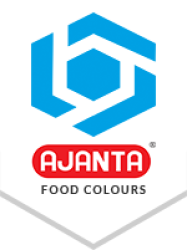_1752528814.jpg)
In today’s world, manufacturers use colour in their products to make them stand out on store shelves, capture customer attention, and boost sales. You may often experience this many times when you visit any supermarket. Colour is a very important component that manufacturers use in their products strategically to boost sales and improve brand recognition of the product in the market. Manufacturers analyze the market from different factors such as consumer psychology, cultural preferences, and regulatory guidelines. This helps them to create the product which is compatible with the targeted market and aligned with their people's preferences that often differ from region to region. For example, in Asia, people prefer bright red colour in beverages, and in Europe, people prefer muted pastel colours in snacks.
Let’s dive into the fascinating world of colour in manufacturing and uncover why the right shade of colour is not just a random colour there’s a strategy behind it.
Colour Isn’t Universal—It’s Regional
As we know, every region has its colour favourites that influence the buying decisions of customers. For example, in Europe, people prefer natural tones like pastel pinks, earthy greens, and creamy shades in confectionery and bakery products. In Japan, soft tones like peach, lavender, or matcha green are often chosen to reflect minimalism and seasonal aesthetics. In North America and Asia, bold and vibrant colours like bright red, electric blue, vibrant yellow, and hot pink are preferred, especially in food products such as cereals, candies, and beverages. Smart manufacturers study these preferences closely and use colour in their products accordingly that increase their sales.
The Psychology Behind Colour Choices
Colour has a direct impact on human psychology. It influences the taste perception, quality judgment, and even trust. Studies have shown that customers often associate some colour with some specific products such as:
- Red with sweetness, excitement, and urgency (great for beverages, sauces, candies)
- Green with freshness, health, and organic quality (used in pharma, snacks, pet food)
- Blue with calmness and reliability (seen in dairy, cosmetics, oral care)
- Yellow with happiness and warmth (popular in bakery, cereal, and seasoning blends)
Companies choose colour shades based on how they want to perceive the product to customers. A fruit drink of vibrant purple colour may signal exotic berries, while a clean white or soft yellow vitamin supplement signals purity and trust.
Local Regulations Shape Global Colour Usage
Colour is permitted to be used by the governmental body of the country, whether they are natural or synthetic food colour. Many colours that are allowed to be used in a product are banned from others. This forces companies to select the colour that is approved to use in their region. For Instance:
- Tartrazine (Yellow 5) is commonly used in the United States, but it requires warning labels on products in the European Union.
- Red 3 (Erythrosine) is banned by the FDA in cosmetics in the U.S., but it is still allowed to be used in some food products.
- Similarly, Sunset Yellow FCF (E110) is restricted in Norway and Finland, but it is widely used in Asian countries.
Because of these regulatory differences, various big companies that selling their products globally uses different colour formulations for their products to sell or export them legally. Manufacturers work closely with synthetic food colour suppliers to ensure regulatory compliance of product without compromising their visual appeal.
Product Type and Packaging Influence Colour Selection
Manufacturers do not select colour just like that, they choose it according to product type, format, material, shelf life, and packaging. In transparent bottles, manufacturers prefer liquid colours that have excellent light stability. In baked goods heat-stable colours are required that do not fade or change over time like synthetic lake colour or encapsulated dyes. For instant noodles and dry mixes oil-dispersible colours are ideal which do not fade or bleed on products. If the packaging is metallic, certain hues might appear darker, so manufacturers uses lighter colour shades to balance the colour of the product. The interaction between colour and packaging affects the buying decision of customers and how they see products on shelves.
Branding, Identity, and Consistency
Big brands are not just selling the products they are selling an experience that customers remember. That’s why they are focused on the appearance and consistency of colour in their products. A chocolate-flavoured drink of a reputed brand appears exactly the same dark brown shade whether you purchase it in India or Brazil. Manufacturers achieve this colour accuracy in their products by using high-quality synthetic food colours that they are sourcing from trusted and well-known food colour suppliers that offer custom colour matching services and documentation like COA, TDS, and regulatory compliance certificates. This colour consistency in the product also boosts brand recalls which boost sales. A very minor change in colour shade can damage the brand reputation in the market and lose the trust of customers.
Final Thoughts
As we talked in the entire article, colours play a crucial role in products. Manufacturers strategically use different colour shades in their products which makes their products unique and different from their competitors. These visually appealing and unique coloured products attract the attention of customers and boost the product's sales and brand recognition in the market.
If you are a manufacturer of food, cosmetics, pharmaceuticals, or pet food products and are looking for a reliable option to purchase high-quality synthetic food colours that fulfil all the regulatory requirements of colours, you can go with Ajanta Food Colours, a leading synthetic food colour manufacturer with over 75 years of legacy. For the quality and safety of its colourants, Ajanta received various awards and certificates from India and from other countries where Ajanta exports its high-quality, FDA-approved food colours.
Some of the awards and certificates received by Ajanta Food Colours includes the Arch of Europe Award, the Bureau of Indian Standards (BIS) Award, certifications from the Food Safety and Standards Authority of India (FSSAI), the US Food and Drug Administration (US FDA), as well as Halal, Alcumus ISOQAR, Star-K Kosher, Food Safety System 22000 (FSSC 22000), and ISOQAR certifications, among others.
To know more about Ajanta Food Colours, its premium synthetic food colour solutions, or for any other information, please contact us today!




